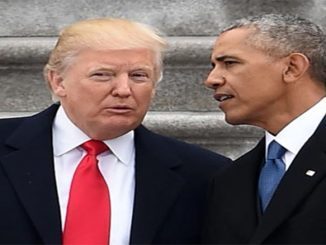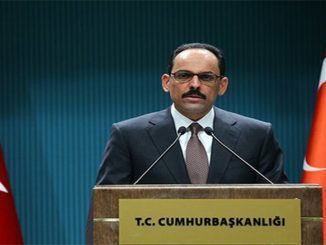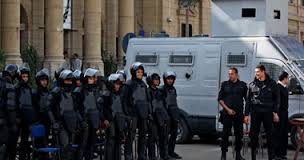
“Whoever seeks good finds favor in return”, Coptic Cleric Yoanes used this proverb to justify mobilizing the Copts in the United States during al-Sisi’s visit to attend the 71st debate of the United Nations (UN) general assembly.
The rallies, which were mobilized to receive al-Sisi during his visit to the US, were described as “sectarian” rally. The crowds who were mainly Copts raised the pictures of the Pope of the Coptic Church- Tawadros II- and Abdel Fattah al-Sisi during the ceremonial reception, said AL-Jazeera.
The Copts wanted to send a message to Abdel Fattah al-Sisi that they were the only party which is supporting him, and that the Copts did not leave him to face alone the anti-coup rallies which besieged his hotel during his residence in New York.
Some observers believe that this crowd organized by the Church wanted to return the favor for al-Sisi for the new Church Building Law which was considered as the most important law in favor of the Copts in 160 years.
In fact, the remarkable thing about this scene is the emergence of the Orthodox Coptic Church as a political party that mobilizes its supporters for a political mission.
The Church has implemented this role during Mubarak’s era within an unwritten memo of understanding between both sides.However, the church lost this role after January Revolution in 2011 when the Coptic youth, intellectuals and youth movements led the scene to present the Copts’ problems within a national framework with many Muslims.
It is noteworthy that those Christian activists, who participated in January revolution, are now trying to challenge the Church’s power in imposing itself as the sole representative of the Christians in front of the state.
In this context, more than 160 Christian activists sent “an open letter to the church, state, and civil society”, condemning the Church’s latest move in mobilizing the Christians to support al-Sisi in New York. They considered this move as anti-democratic, and a form of religion’s interference in politics.
When January Revolution erupted, the Coptic Church’s leadership was among the major supporters of Mubarak, and it called the Coptic youth not to participate in the revolution, but its attempts failed.
Many Coptic youth participated in the demonstrations and even some of them carried banners that read; “I am participating despite the Pope’s decision to ban the protests”.
“The revolution days in AL-Tharir square gave an opportunity for a real merging and interaction between the Muslim and Christian youth in a common political mission. This experience helped in the emergence of many Coptic youth and activists and revived the civilian spirit among many Christian leaders.
Accordingly, the Christian civilian front (described as secular by the church) became more powerful than the church’s clergymen for the first time, despite the presence of Pope Shenouda III, the charismatic Pope of the Orthodox Coptic Church.
However, the counter revolution and the deep state institutions, which had sought to abort the revolution and all its outcomes, had also targeted the new Coptic youth movements that appeared after the revolution.
The Orthodox Coptic Church was one of the main counter revolution agents that launched a harsh war against the revolution together with other agents and state institutions.
The Church wanted to regain its political role as well as its spiritual power that was undermined by the post-revolution developments. Accordingly, the Church participated in inciting against President Mohamed Morsi, the first democratically elected president in Egypt’s history, under the pretext of belonging to the Muslim Brotherhood. The church also played a vital role in 2012 in creating a crisis inside the constitutional committee – which was authorized by the parliament to prepare the draft constitution. Moreover, the Coptic Church played a major role in mobilizing the Copts in June 30 demonstrations against President Morsi.
In this context, the Coptic Church led by Pope Tawadoros II has played a major role in plotting the military coup scene with al-Sisi, Al-Azhar Sheikh, Mohamed Al-Bradei, Al-Noor Salafist Party and other high ranking military commanders.
Right after the military coup, the Pope of the Orthodox Church led a similar coup in the church and restored back Shenouda’s policy which was based on the Church’s monopoly of representing the Christians politically.
Despite the recent sectarian violence that escalated under al-Sisi reign, however the Pope of the Coptic Church still enjoys close relation with al-Sisi. Egypt’s Coptic Church held many hopes regarding Abdel AL-Fattah al-Sisi and considered him the savior sent from God to save them from the Muslim Brotherhood rule.
They have always supported Al-Sisi with prayers. Recently in New York, they have mobilized their people in buses to support him in this event.
In fact, the sectarian crowd lost its national essence by carrying the pictures of Pope Tawadoros II together with al-Sisi’s photos, and the crosses together with Egypt’s flag. The scene led many fears among the civil powers in Egypt, even among the Christians themselves, as they believe that this will have negative repercussions on the Christians inside Egypt.



